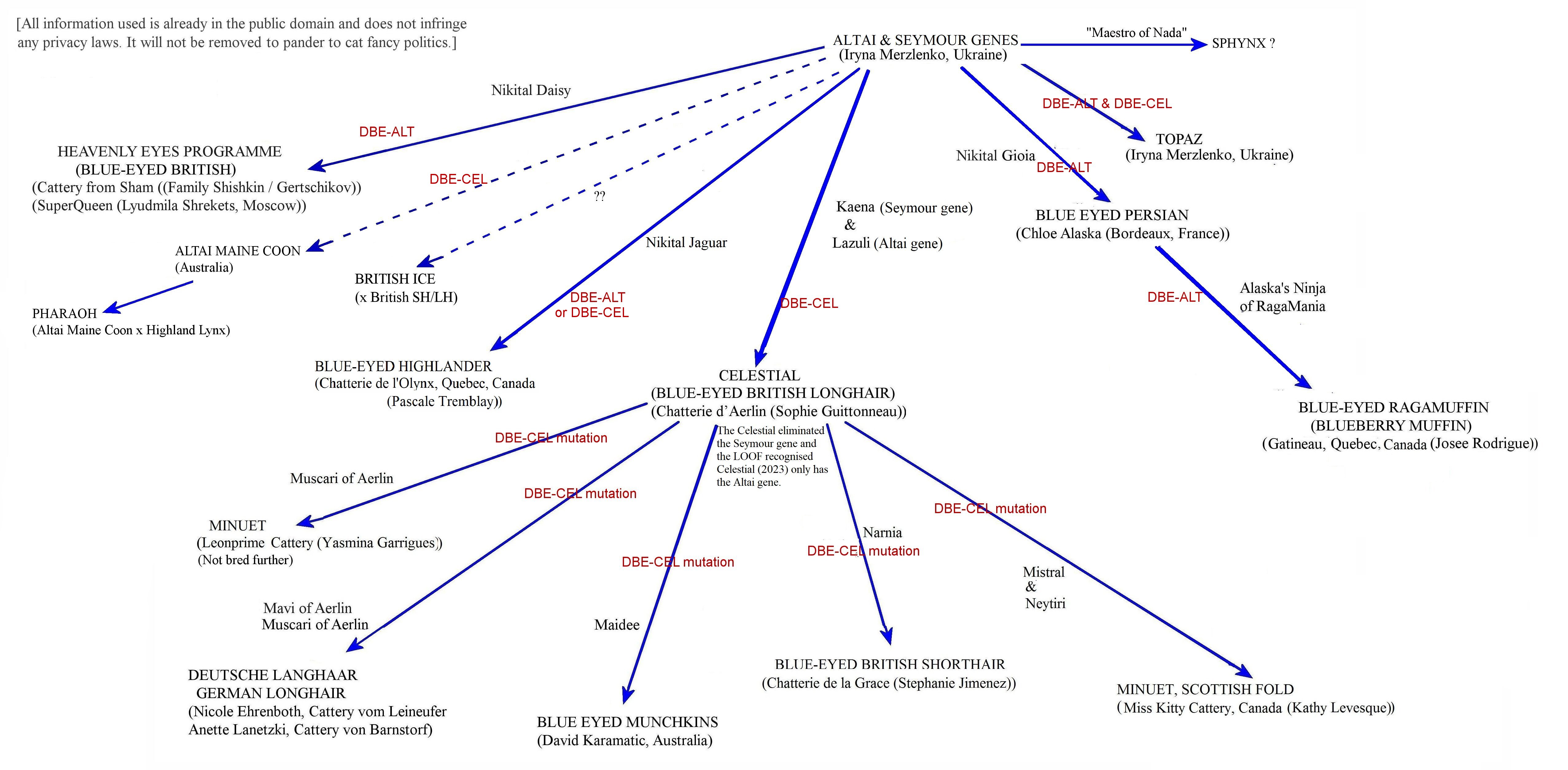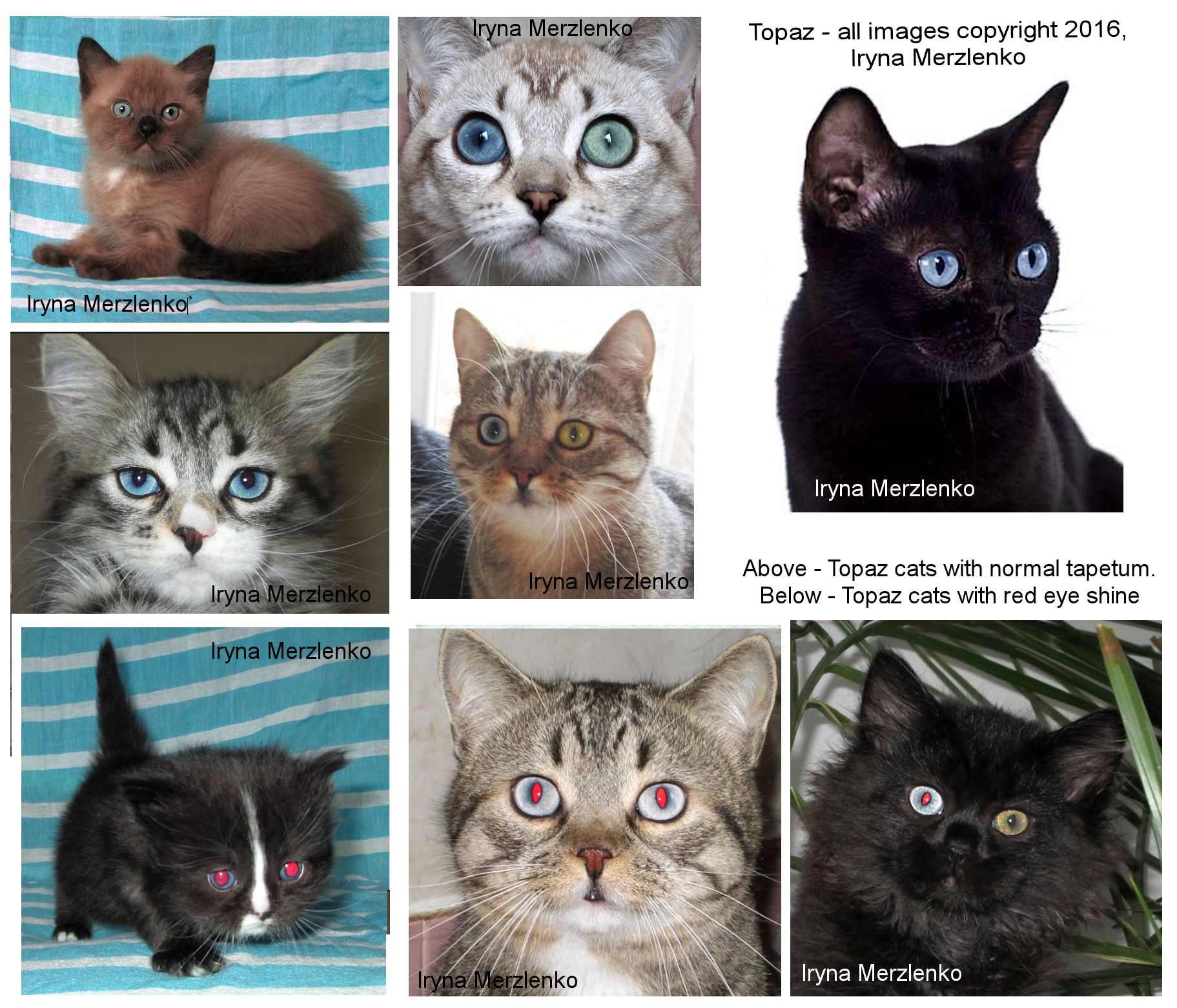
BLUE-EYED BREEDS TOPAZ (UKRAINE) (SEYMOUR DBEALT and ROXI DBECEL genes)
TOPAZ
The Topaz was developed by Iryna Merzlenko in Nikital cattery in Ukraine starting in 2016 (on hold because of Russian invasion of Ukraine). It is the Asian equivalent of the Ojos Azules and is also mistakenly known as the Russian Ojos Azules. It is not related to the American Ojos Azules. The first cat came from Kazakhstan (Eastern Altai) and is the Altai Goluboglazaya breed ("Altai Blue Eyed" breed- dominant gene with incomplete penetrance i.e. some cats can have the gene but not display it). The second cat came from Russia, 3,000 km from the first cat and was dubbed the Russian Ojos Azules (Russian Blue Eyes) because it resembled the American breed (which was never exported from the USA). Whether it is a mutation of the same gene as the unrelated American cats can only be found out by genetic testing. Unlike the American breed, the Russian cats do not have gross physical deformities associated with the mutation, however most homozygotes are deaf.
Cats descended from Fyodor and Seymour have the DBEALT gene, while cats descended from Roxi have the DBECEL gene which meant that Topaz cats initially had a mix of two different genes.

The preliminary standard for the Topaz calls for a small or medium-size, compact cat. They are not high on paws. The tail is straight, round and thick. The head is medium sized and rounded, with a well-developed chin and good jaw (no more than 2mm undershot). The ears are small or medium size, broad at the base; the tips may have a small brush. The Shorthair Topaz has a short, glossy, close-lying coat and almost no undercoat. The Longhair Topaz has a long outer coat and a small amount of undercoat, a very long and fluffy tail, fluffy britches and a small neck frill. To prevent mixing with blue-eyed whites, the coat colour can be anything except pure white or predominantly white. If there is more than 25% white, the tail tip should be a solid dark color.
The eyes are large or very large, round, wide open and expressive. The eye colour is the distinguishing feature. Eyes must be blue either both eyes or odd eyes. The blue ranges from deep, bright blue through to violet blue. Cats with red pupils may be used for breeding. In odd-eye Topaz, the non-blue eye is often a shade of green or yellow-green.
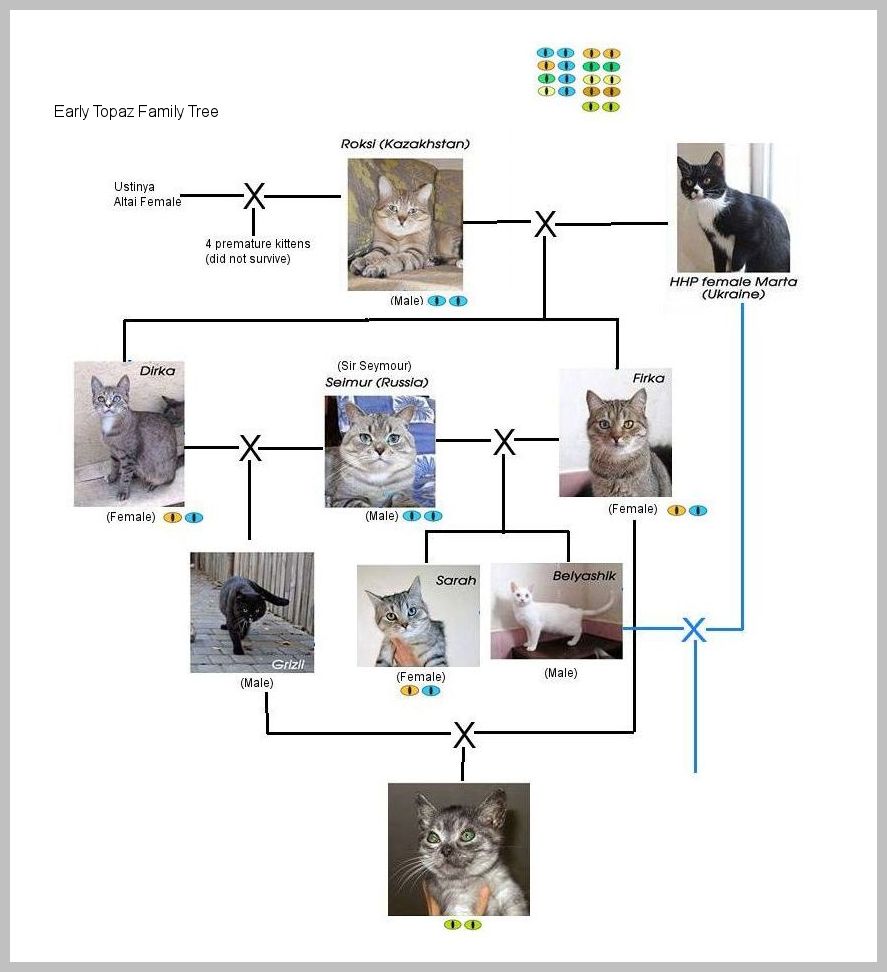
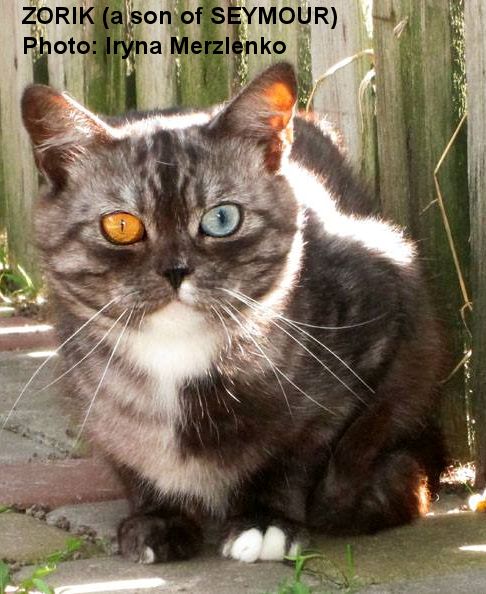
In later generations, black-eyed Topazes occurred, probably due to the mix of two different genes. These had irides so dark-coloured that they are black. On close inspection, they appear to be a very dark olive green. Six kittens with black eyes were born in litters from certain combinations of parents. All six kittens died from infections that were successfully treated in their normal littermates. Iryna concluded that in addition to black eyes, they had problems with their immune systems. Iryna was certain that the black-eyed kittens were not homozygous for DBE. This is confirmed by photographs of the black-eyed kittens: none of them had the white distribution characteristic of homozygotes, none were deaf and there were no other indications they were homozygotes. A mix of DBEALT and DBECEL genes was the most likely cause. Since the black eye colour was an indication of an undesirable combination of genes Iryna sterilized the lines that produced this trait.
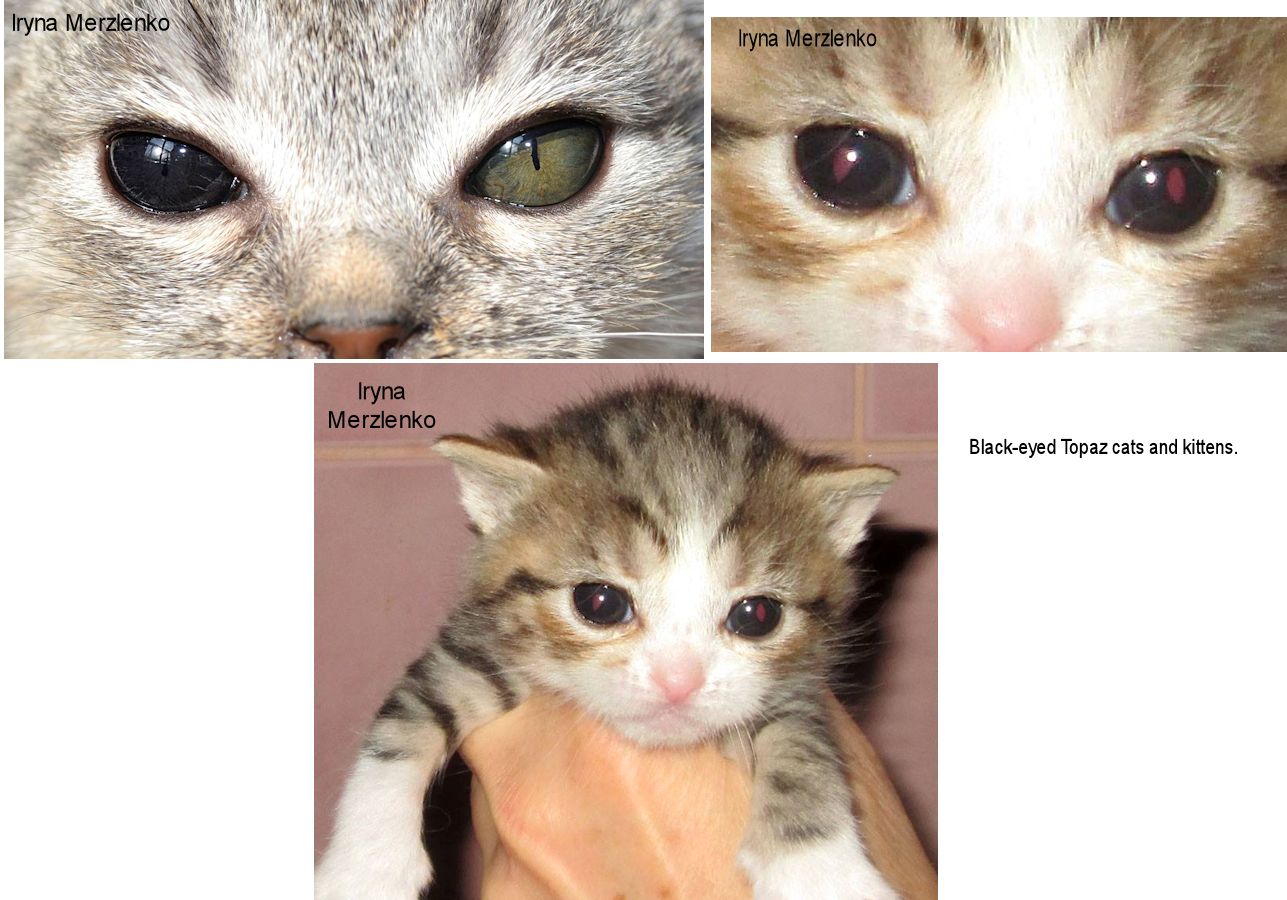
The Topaz is a playful, affectionate, people-centred cat.
Acceptable outcrosses are Bombay (Asian Shorthair), British Shorthair, European Shorthair, Altai Goluboglazaya. Crossing to the Scottish Fold is not permitted. It is not advisable to mate two blue-eyed cats together in case this gene has similar side-effects to the gene found in the unrelated American Ojos Azules. Topazes have been exported to American breeders, the Gobbles, who intended to register them as Ojos Azules even though the gene is different. Having obtained the Topaz cats for breeding in the USA, contact with the breeder was blocked. Cats have also been exported to France (Nikital line) and Germany to found new varieties there.
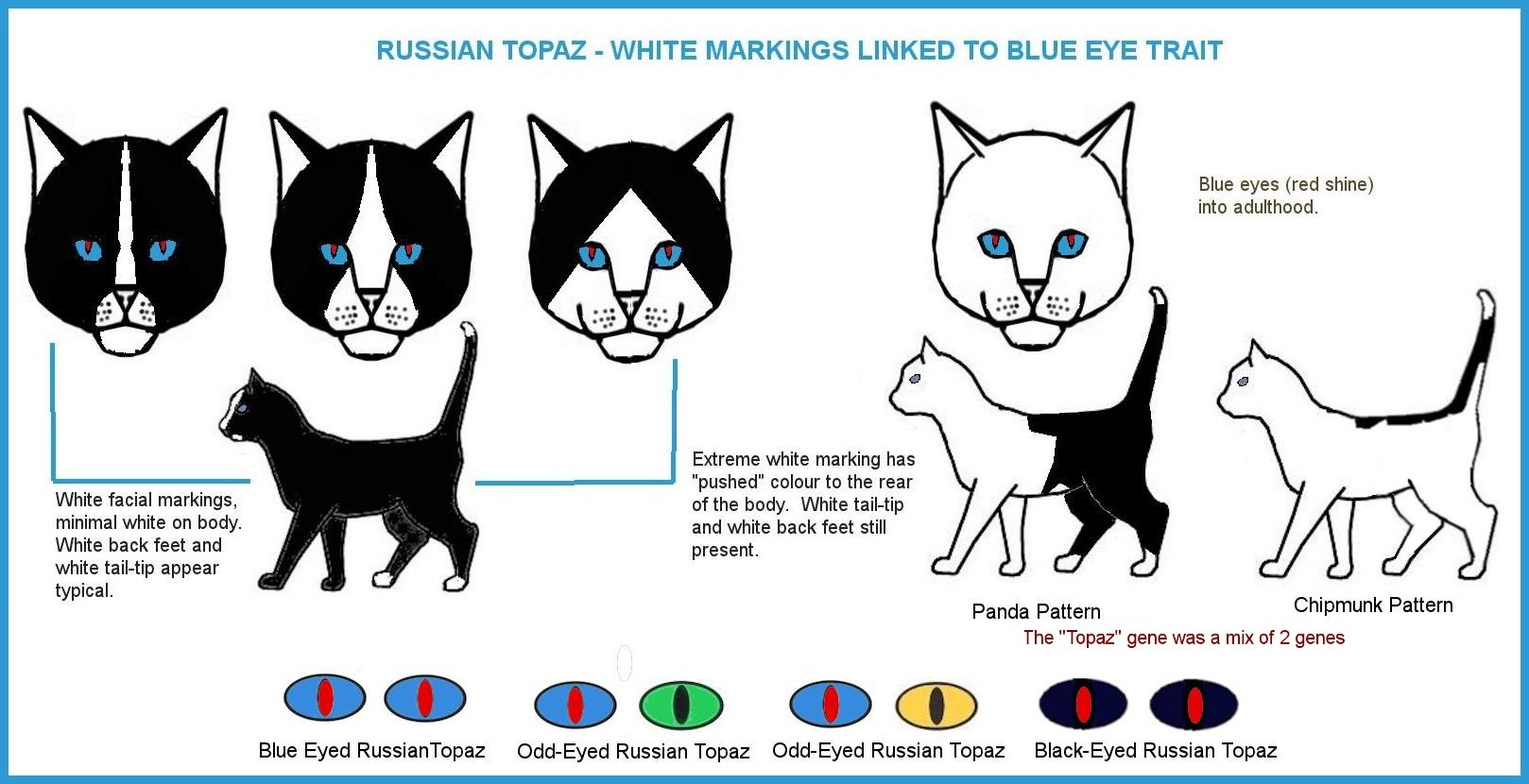
According to Iryna, the percentage of deformities and stillbirths is about the same as in any other cat breed. In the case of homozygotes which have a high degree of white, the only drawback is deafness, but not all high-white Topaz cats are deaf. Iryna's female Christina, which has the same "white shirt and dark trousers" pattern (dubbed Panda pattern) as Panda, has a normal hearing while Panda does not. A more extreme pattern is "chipmunk" - all white with a short colour stripe along the backbone. These "high white" patterns occur only in homozygotes and the pattern is random, not inherited consistently. It is not known which of the two DBE genes the “panda” and “chipmunk” kittens are homozygous for: the Altai gene from Roxy Darlin, or the gene from Seymour. Could they be homozygous for both genes? It is also unknown how the W series (white spotting) genes affect the distribution of white; white marked cats were widely used during the development of the Altai breed.
Homozygotes are not used in Topaz breeding and the breeding combinations are selected in order to avoid them. The other anomaly is that homozygotes tend to have a shorter nose and sometimes deformation of the nasal mirror (deviation of the nasal septum), but this does not affect breathing or lifestyle. Because the Topaz cats were derived from two distinct blue-eyed populations that occurred 3,000 km apart, there may well be two different genes at play. So far, only one breeder who crossed a Russian blue-eyed cat with another breed in order to introduce the blue-eyed trait, found higher than expected mortality in kittens, but this might be due to factors unrelated to the eye colour gene.
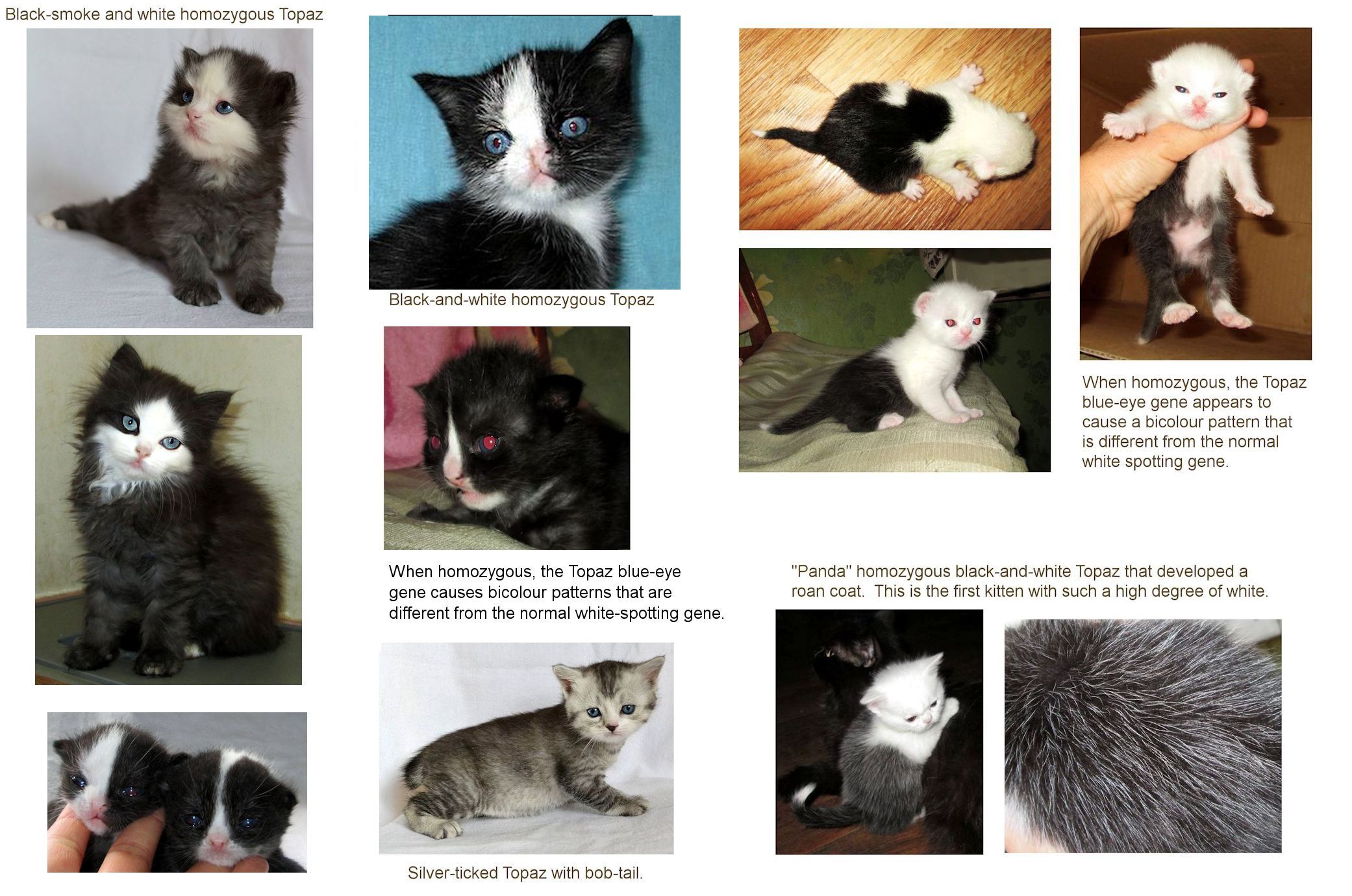
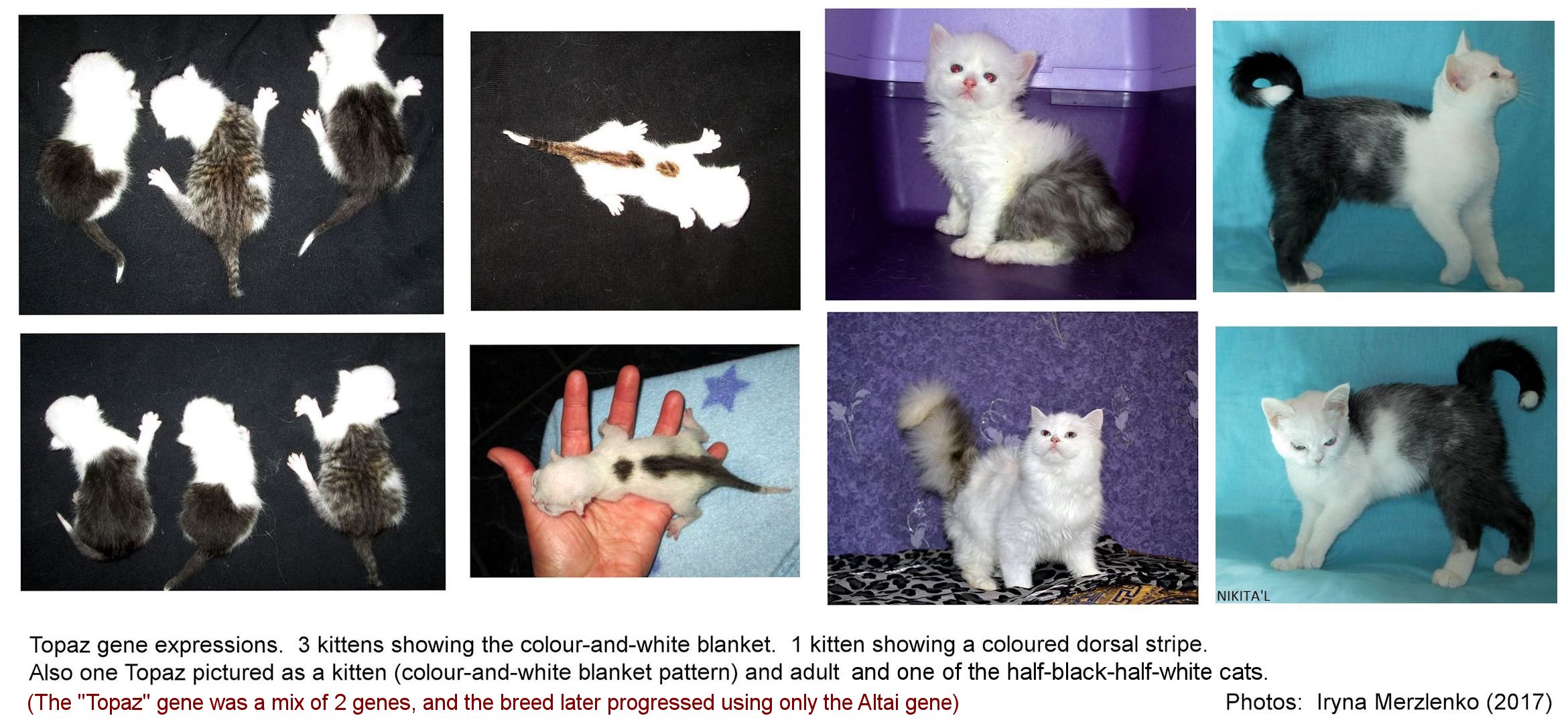
One of the blue-eye genes involved also affects coat colour. The colour-and-white-blanket patten (Panda pattern) which looks like a cat wearing a white shirt and coloured trousers is linked to one of the blue eyed genes and to deafness in some of the cats. These cats can also change from black to silver grey or black-roan in a manner resembling the karpati pattern. Karpati, roan and rigntail are all desirable characteristics in the developing breed.
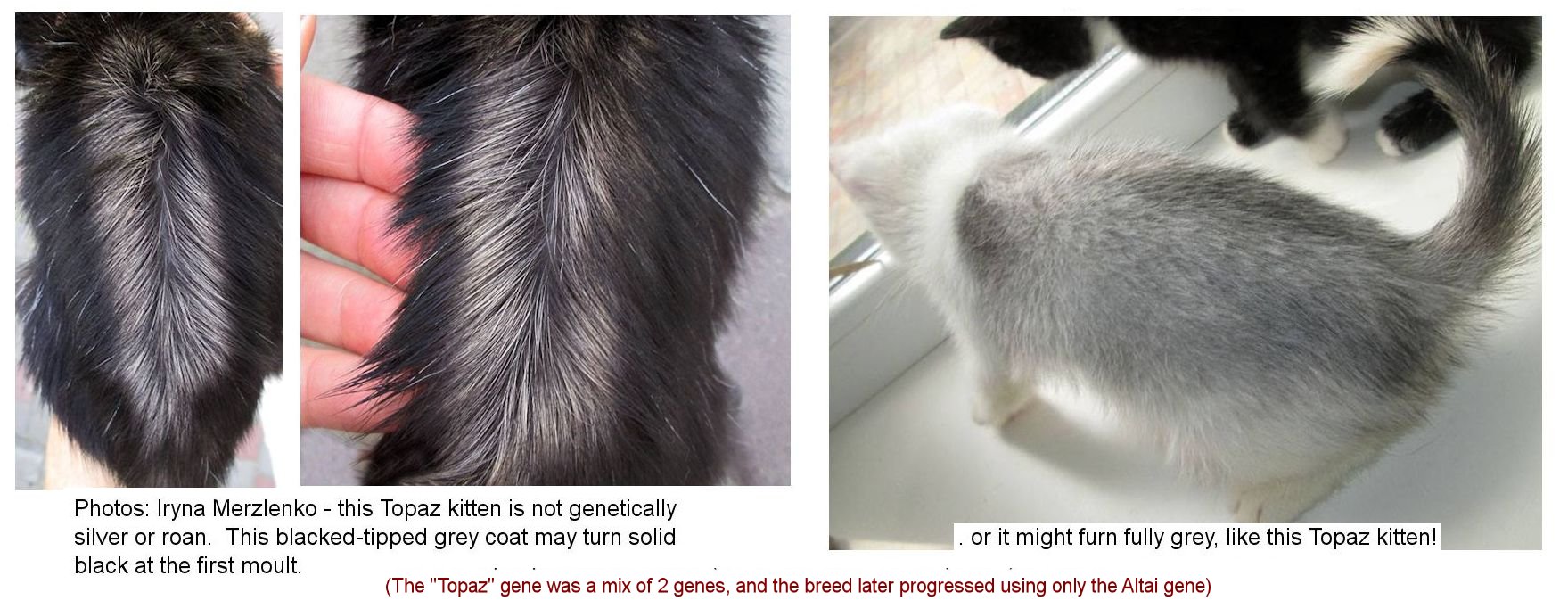
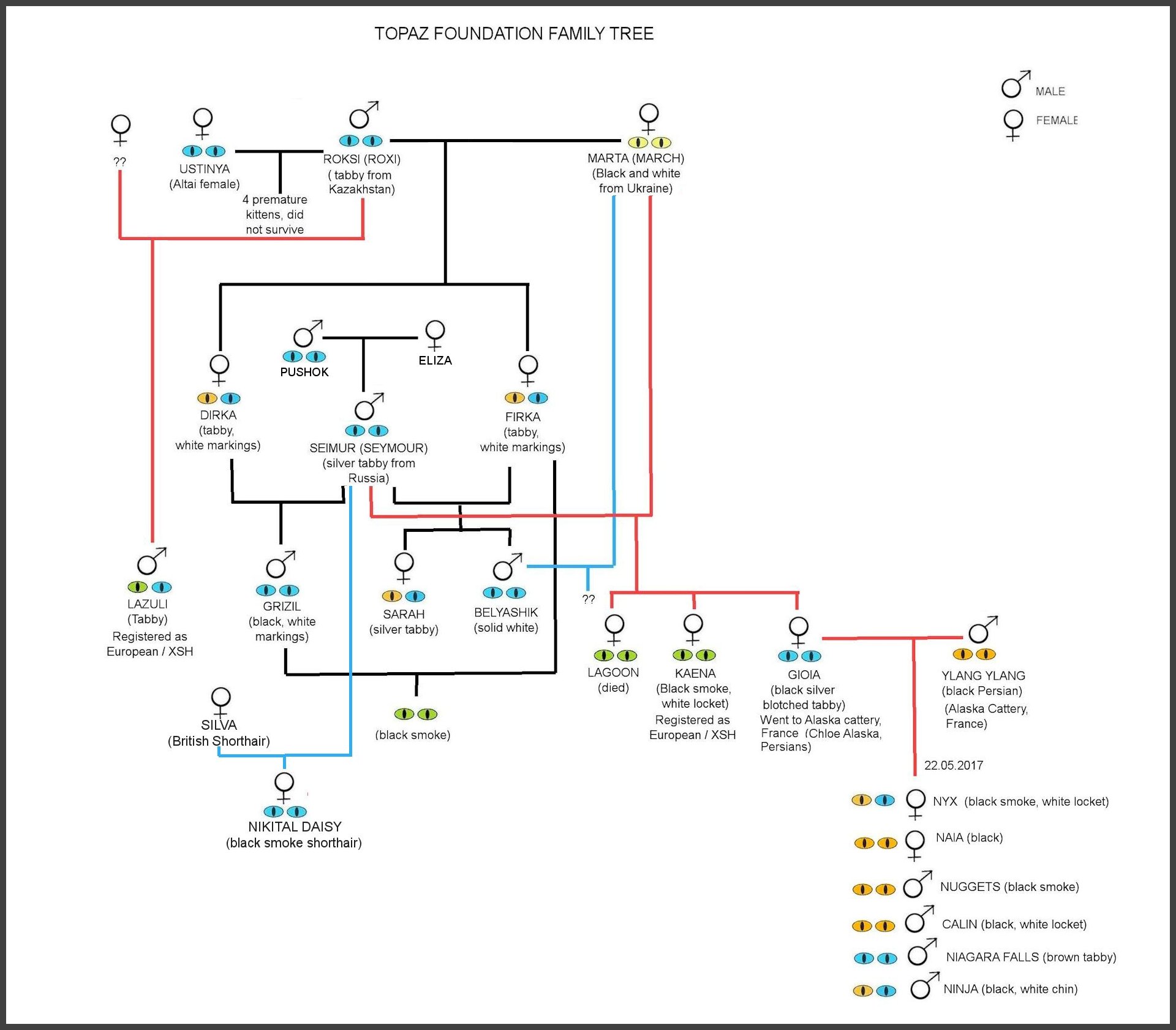
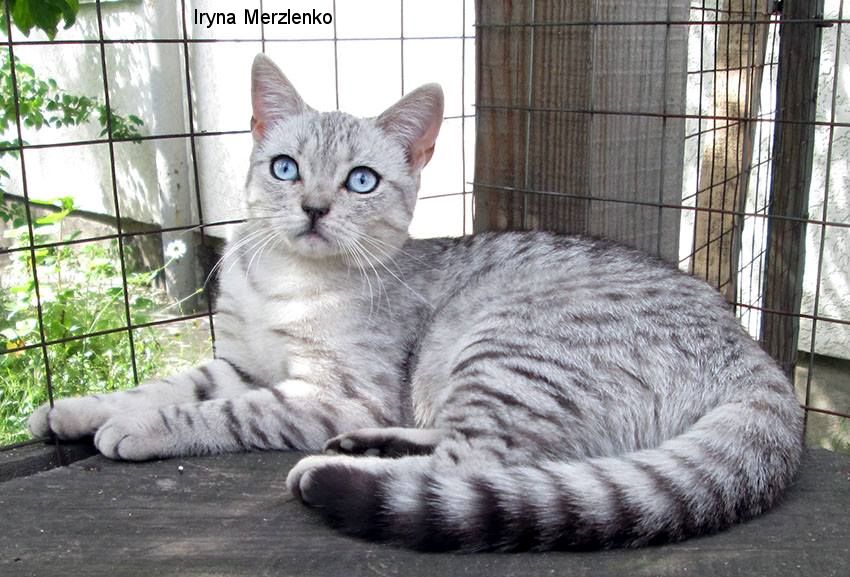
When the Russian invaded Ukraine, Iryna had to flee to Poland with her cats and dogs. Her computer, containing breeding records, was stolen, and the Polish authorities dictated that most of her cats (there was a large number) had to be sterilised and homed as pets or sold. She was unwilling to see her cats snapped up by other breeders who would use her many years of hard work for free. Thus the original Topaz breed is either lost or suspended and many of the records are lost. Cats described as Topaz still appear for sale online.
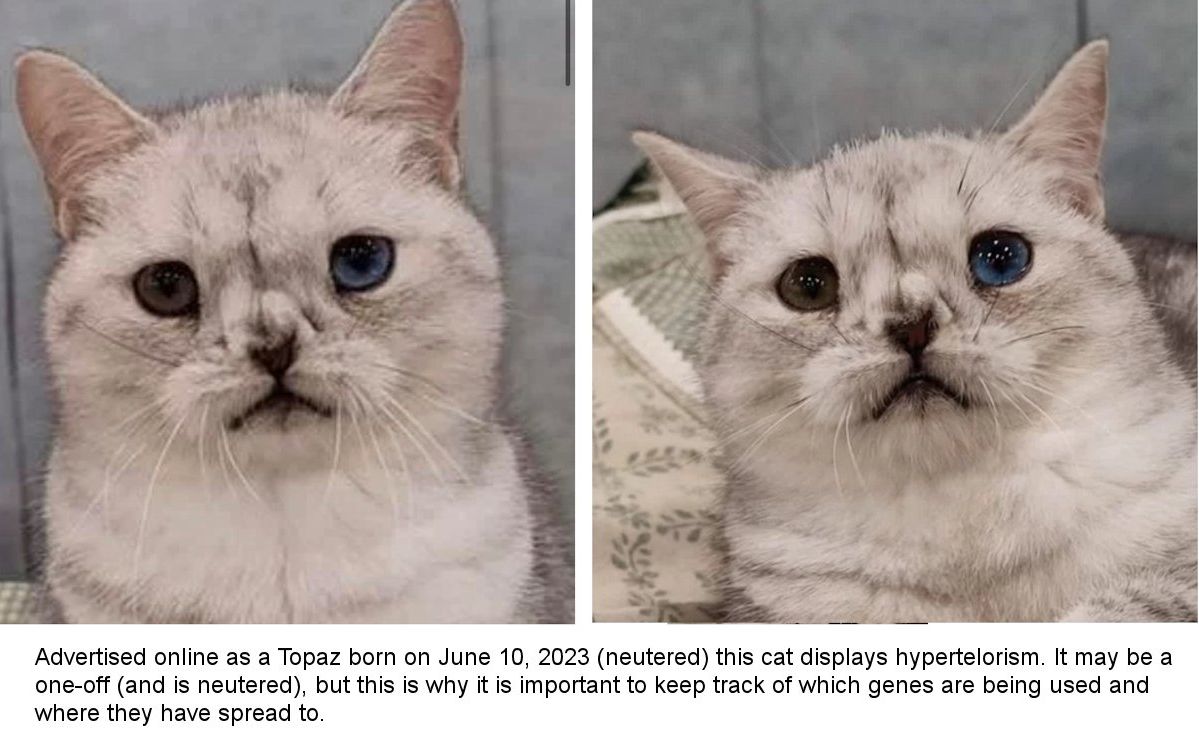
While there was a preliminary Ukraine Topaz breed standard, the Pharus Lux cattery in the USA plans to develop an "American" Topaz breed, possibly under a new breed name. The foundation males are a black bicolour Topaz named Merlin and a red-bicolour Topaz named Chernoborg. The other cats include Bengals (sepia + glitter genes).
